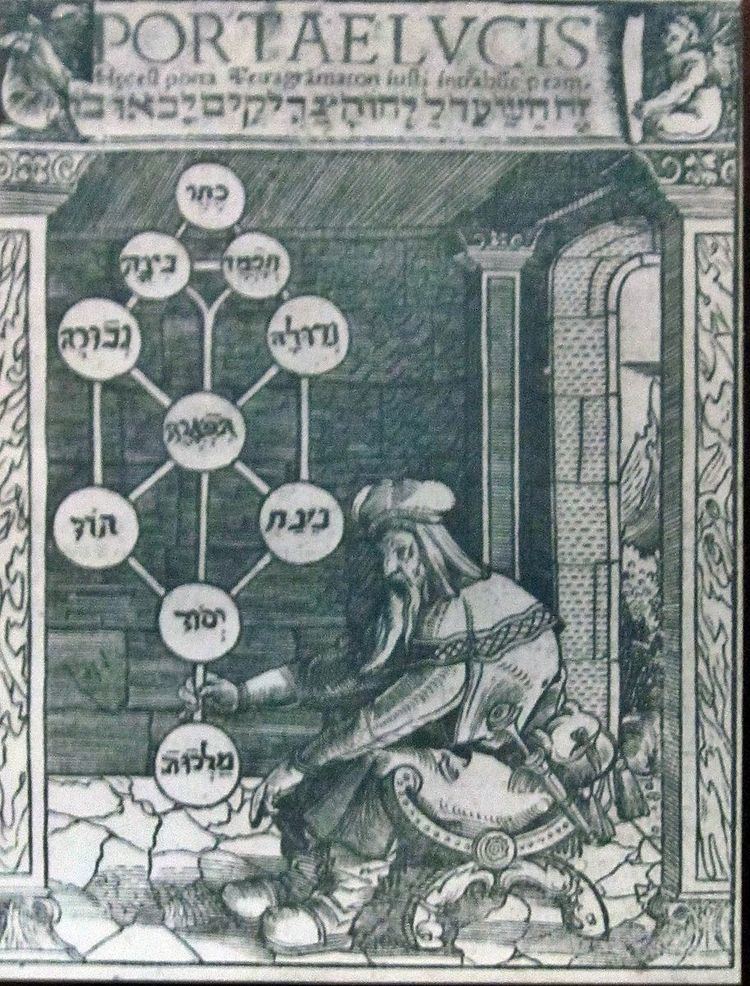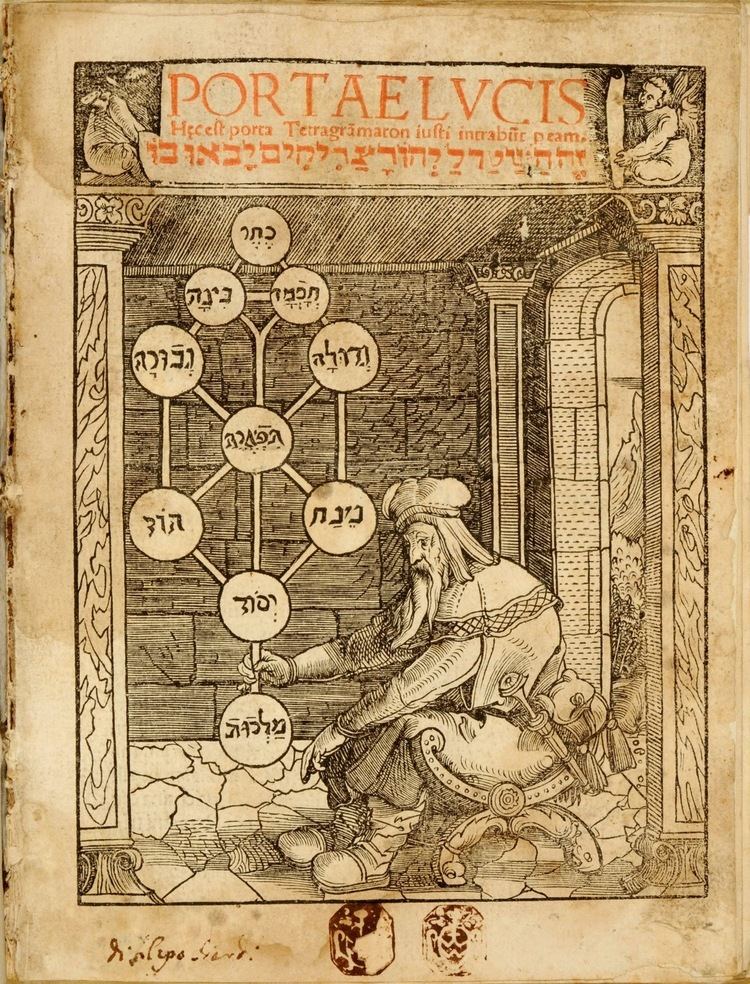Name Joseph Abraham Died 1305, Penafiel, Spain | Books Gates of light | |
 | ||
Joseph ben Abraham Gikatilla
Joseph ben Abraham Gikatilla (1248 – after 1305) (Hebrew: יוסף בן אברהם ג'יקטיליה, Spanish: Chiquitilla, "the very little one") was a Spanish kabbalist, student of Abraham Abulafia.
Contents

Biography
Born at Medinaceli, Old Castile, Gikatilla was for some time a pupil of the kabbalist Abraham Abulafia, by whom he is highly praised; his kabbalistic knowledge became so profound that he was supposed to be able to work miracles, and on this account was called "Joseph Ba'al ha-Nissim".. (the Thaumaturge or literally Master of Miracles; Zacuto, Yuḥasin, p. 224a). Like his master, Gikatilla occupied himself with mystic combinations and transpositions of letters and numbers; indeed, Abulafia considered him as the continuator of his school (Adolf Jellinek, B.H. iii, p. xl). But Gikatilla was not an adversary of philosophy; on the contrary, he tried to reconcile philosophy with kabbalah, declaring that the latter is the foundation of the former. He, however, strove after the higher science, that is, mysticism. His works in general represent a progressive development of philosophical insight into mysticism. His first work shows that he had considerable knowledge of secular sciences, and that he was familiar with the works of Ibn Gabirol, Ibn Ezra, Maimonides, and others. He died at Peñafiel after 1305.
In different manuscripts of the work the author's name is variously written "Gribzul," "Karnitol," and "Necatil," all corruptions of "Gikatilla."
Ginnat Egoz
Gikatilla was a prolific writer; he wrote his first work (Ginnat Egoz, גנת אגוז) when only twenty-six. It is a kabbalistic treatise in three parts (Hanau, 1615).
Gikatilla at times criticizes the Sefer Yeẓirah and the Pirḳe Hekalot. The seven heavens (Ḥag. 12a) are identified by him with the seven planets. He holds Maimonides in great esteem even when he opposes him, and quotes him very often. Other authorities quoted by him are Ibn Gabirol, Samuel ibn Naghrela, and Abraham ibn Ezra. Isaac ben Samuel of Acre in his Me'irat 'Enayyim severely criticizes Gikatilla for too free usage of the Holy Name.
Sha'are Orah
Sha'are Orah, or Sefer ha-Orah, (שערי אורה) is Gikatilla's most influential work. The Arizal call it "a key to understanding the mystical studies". The Vilna Gaon and Zundel Salant recommended that their students study it. Among those who quote it are: Moshe Cordevero, Joseph Caro, Chaim Vital, the Shelah ha-Kadosh, the Sefat Emet, Shem Tov ibn Shem Tov, Moses al-Ashkar, and Judah Hayyat, and long extracts from it are inserted by Reuben ben Hoshke in his Yalḳuṭ Reubeni. It was translated into Latin by Paul Ricius and used by Reuchlin as a defense against his adversaries.
Contents and Style
Sha'are Orah (Mantua, 1561) deals with the names of God.
Gikatilla takes an attitude somewhat hostile to philosophy. He quotes only the Sefer Yeẓirah and the Pirḳe Hekalot,.
